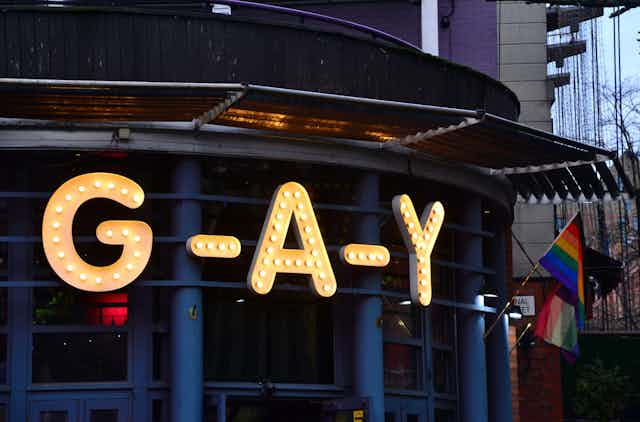Around the world and across the UK, gay nightlife is dying. Evidence of this demise and the ongoing threat of bar and club closures can be seen everywhere. In late 2023 the renowned London club G-A-Y closed its doors, as did many other bars and clubs, victims of an array of economic difficulties.
These include customers no longer having spare income for clubbing, or spending less on nightlife due to the cost of living crisis – not to mention the general economic and social turmoil left in the wake of the COVID-19 pandemic.

All these things have acted to catalyse this destructive process, stripping city nightlife scenes of queer venues. Of course, we know the pandemic has been responsible for decimating all nightlife scenes, which have been suffering ever since the first lockdowns. Yet, queer venues have been hit disproportionately more than their straight counterparts.
This is because they are affected not just by these economic difficulties, but also by more complex economic and social changes that apply specifically to marginalised communities. This includes some within these communities being more likely to earn less than straight people, and the increasing numbers of queer people meeting online instead of in person. This wave of closures has meant queer spaces have suffered greatly, leading to changes in the way that queer people meet and socialise.
Revolution through evolution
But if gay nightlife has been forced to change, something more exciting is evolving in its place, according to Amin Ghaziani’s book Long Live Queer Nightlife: How the Closing of Gay Bars Sparked a Revolution. By sharing insights and experiences from in and around London’s evolving queer nightlife scene, Ghaziani reveals how it continues to thrive in spite of widespread closures.
While the ongoing closures of queer venues is noted by Ghaziani as a “disruptive event” that has altered the way we think about queer space in city life, the message is not a pessimistic one.
Ghaziani argues that the very nature of queer spaces has merely transformed, now surviving more independently “underground” – often away from the mainstream nightlife sectors. Ghaziani’s book links the demise of gay clubs in London to the rise of new queer events appearing throughout the city.
These include special club nights – such as Femmetopia – in typical event spaces, or the use of unusual spaces such as abandoned warehouses, like Bollywood-queer crossover club Hungama, and the creation of new queer spaces that think outside of the box, like “travelling queer venue” CAMPerVan (which, as its name suggests, is set up and conducted from a lowly campervan). Ghaziani reveals how these pop-up events use affordable space in ways that directly benefit those that are often marginalised because of their gender identities.
Ghaziani also explores issues around more common forms of gay bars that fail to provide a space for those who do not fit into a “core of whiteness”. They suggest that this new form of the queer night has sought to provide for the LGBTQ+ community in ways that better appreciate people of different race, ethnicity and gender identity. Consequently, nightlife has become more lively and more inclusive than ever before.
The antithesis of the usual gay bar with its largely white, gay male clientele, here is a joyous, nomadic scene of club nights, pop-ups and secret parties where queer, trans and racial minorities reclaim the night for those who have historically been left out.
Simply put, this book is full of queer glee. It creates a refreshingly optimistic perspective on the ongoing demise of queer safe nightlife spaces, focusing on something better emerging that is more edgy, creative and inclusive.
Beyond the city
My own ongoing work, which explores the effects of the closure epidemic on queer nightlife in smaller UK based cities, encourages new questions around this work’s geographical focus. But crucially, I can’t help but feel that the optimism expressed in this book is reserved for cities like London and Manchester which, historically, have always possessed thriving queer scenes.
What about areas that have not undergone these same evolutionary processes? The queer underground of the big city is moving, adapting, evolving, as Ghaziani contends. But what if we travel further afar to UK villages and towns? How does that underground operate there? Does it even exist? Are the same opportunities to experience these new forms of nightlife that Ghaziani explores available to smaller, outlying communities?
These questions should not be read as a criticism. In fact, quite the opposite. Ghaziani’s work establishes new space for further interest, debate and research around such scenes. Culture is changing and this book helps to explain why and how, encouraging the celebration of queer nightlife itself. Still, the question of where this happening, and whether big cities cause a ripple effect outward to smaller queer scenes needs further investigation.
But by immersing us in a night out in the big city, the book manages to convey feelings of fun and togetherness, reminding us that nightlife is above all about joy, expression and community. Ghaziani is asking us not to dwell on the devastation of the gay nightclub scene, but celebrate the queer night’s evolution.

